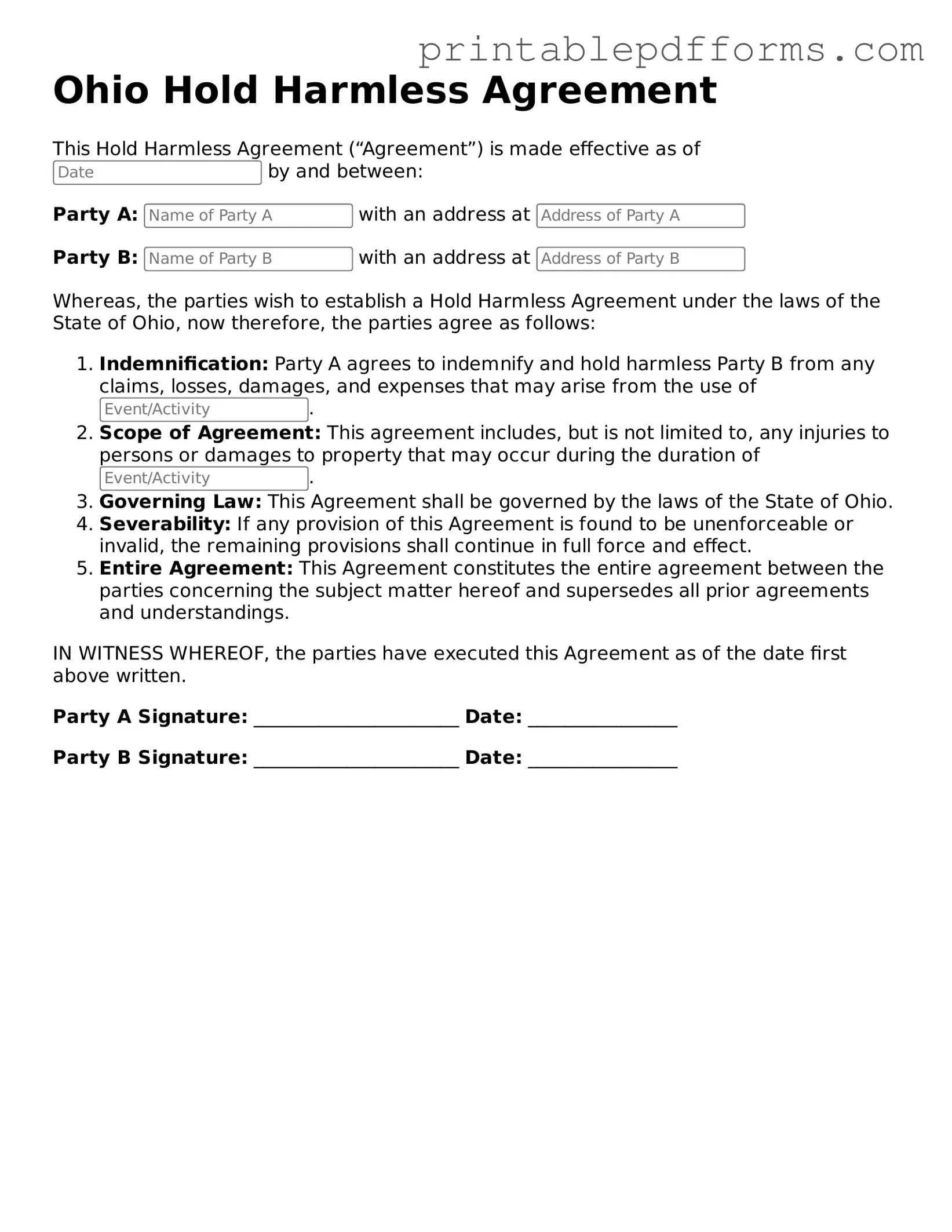What is an Ohio Hold Harmless Agreement?
An Ohio Hold Harmless Agreement is a legal document that protects one party from liability for certain actions or events. Typically, it is used in contracts where one party agrees to indemnify the other, meaning they will cover any losses or damages that arise from specific activities or situations.
Who typically uses a Hold Harmless Agreement in Ohio?
Various parties use Hold Harmless Agreements, including:
-
Contractors and subcontractors
-
Landlords and tenants
-
Event organizers and participants
-
Businesses and clients
These agreements are common in situations where there is a risk of injury or damage, such as construction projects or recreational activities.
What are the main components of a Hold Harmless Agreement?
A typical Hold Harmless Agreement includes:
-
The names of the parties involved.
-
A clear description of the activities or situations covered.
-
Indemnification clauses outlining the responsibilities of each party.
-
Signatures of all parties involved.
These components ensure that all parties understand their rights and obligations.
Is a Hold Harmless Agreement enforceable in Ohio?
Yes, a Hold Harmless Agreement is generally enforceable in Ohio, provided it meets certain legal requirements. It must be clear, specific, and not against public policy. Courts will typically uphold these agreements unless they are found to be unconscionable or overly broad.
Can a Hold Harmless Agreement protect against negligence?
In Ohio, Hold Harmless Agreements can protect against negligence, but this depends on the wording of the agreement. If the language explicitly states that one party will not hold the other liable for negligence, the agreement may be enforceable. However, Ohio law does not allow a party to completely waive liability for gross negligence or willful misconduct.
How should a Hold Harmless Agreement be executed?
To execute a Hold Harmless Agreement properly, follow these steps:
-
Draft the agreement, ensuring clarity and specificity.
-
Review the document with all parties involved to confirm understanding.
-
Sign the agreement in the presence of a witness or notary, if required.
This process helps ensure that the agreement is legally binding and enforceable.
What happens if a party does not honor the Hold Harmless Agreement?
If a party fails to honor the terms of a Hold Harmless Agreement, the affected party may pursue legal action for breach of contract. This could involve seeking damages or enforcement of the agreement through the courts. It is important to keep a copy of the signed agreement for reference in such cases.
Can a Hold Harmless Agreement be modified?
Yes, a Hold Harmless Agreement can be modified if both parties agree to the changes. Modifications should be documented in writing and signed by all parties to ensure clarity and enforceability. Verbal agreements to change the terms may not hold up in court.
You can obtain a Hold Harmless Agreement form from various sources, including:
-
Legal websites that provide templates
-
Local law firms
-
Business associations
Always ensure that the form you choose is appropriate for your specific situation and complies with Ohio law.
